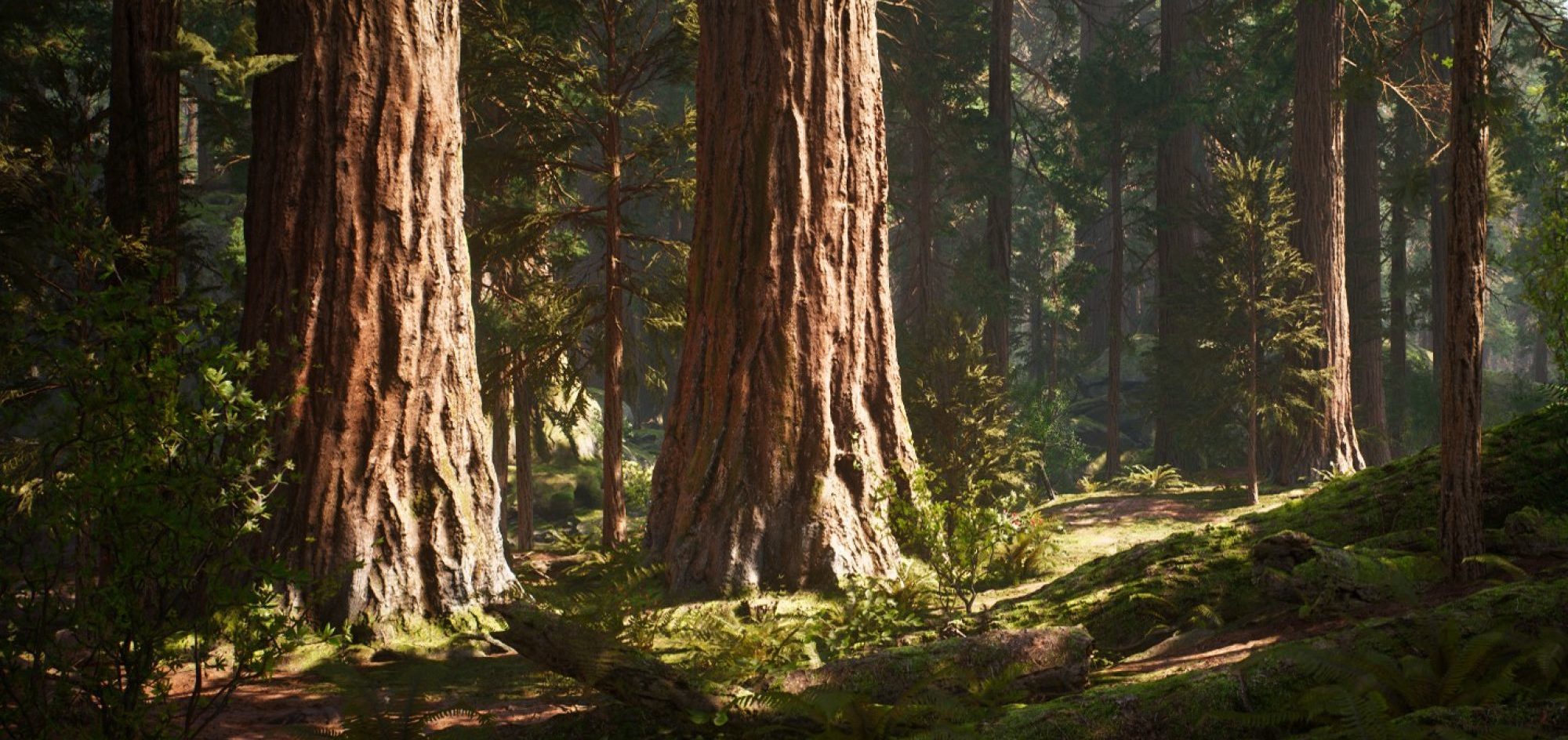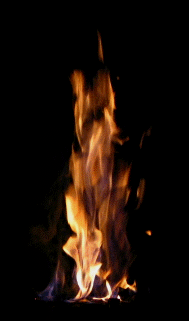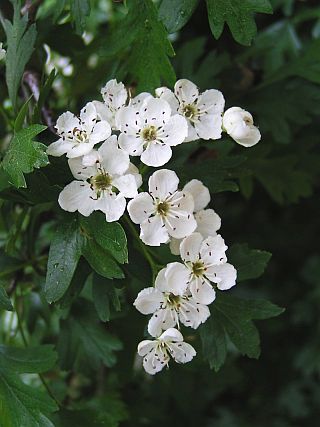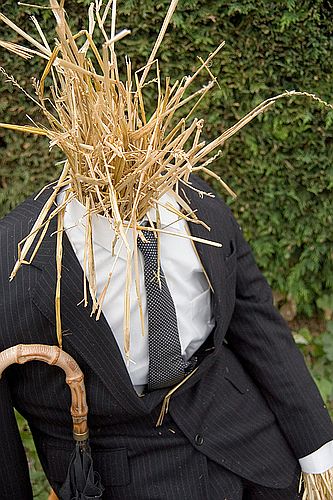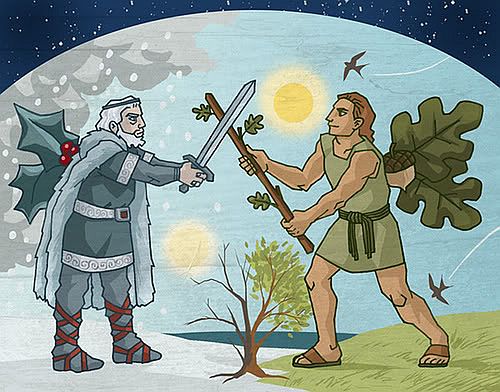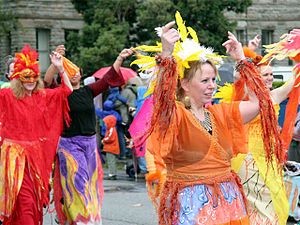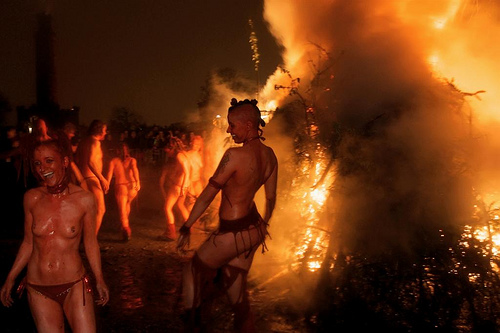|
|
|
In Wales, May 1 is a holiday known as Calan Mai or Calan Haf, which means the first day of summer. Celebrations start on the evening before, known as May Eve, with bonfires; as with Calan Gaeaf, the night before (Nos Galan Mai) is an Ysbrydnos, or “spirit night,” when spirits are out and about and divination is possible. The tradition of lighting Midsummer bonfires happened annually in south Wales until the middle of the 19th century. It is the Welsh equivalent of the Goidelic Beltane. The fire was done in this way: Nine men would turn their pockets inside out, and see that every piece of money and all metals were off their persons. Then the men went into the nearest woods and collected sticks of nine different kinds of trees. These were carried to the spot where the fire had to be built. There a circle was cut in the sod and the sticks were set crosswise. All around the circle the people stood and watched the proceedings. One of the men would then take two bits of oak and rub them together until a flame was kindled. This was applied to the sticks and soon a large fire was made. Sometimes two fires were set up, side by side. These fires, whether one or two, were called coelcerth or bonfire. Round cakes of oatmeal and brown meal were split in four and placed in a small flour-bag, and everybody present had to pick out a portion. The last bit in the bag fell to the lot of the bag-holder. Each person who chanced to pick up a piece of brown meal cake was compelled to leap three times over the flames, or to run thrice between the two fires, by which means the people thought they were sure to have a plentiful harvest. Shouts and screams of those who had to face the ordeal could be heard ever so far, and those who chanced to pick up the oatmeal portions sang and danced and clapped their hands in approval… As a rule, no danger attended these curious celebrations, but occasionally somebody’s clothes caught fire, which was quickly put out.
Customs• On Nos Galan Mai or May Eve, villagers gather hawthorn (draenen wen, literally whitethorn) branches and flowers which they would then use to decorate the outside of their houses, celebrating new growth and fertility.
• In Anglesey and Caernarvonshire it would be common on May Eve to have gware gwr gwyllt (playing straw man) or crogi gwr gwellt (hanging a straw man). A man who had lost his sweetheart to another man would make a man out of straw and put it somewhere in the vicinity of where the girl lived. The straw man represented her new sweetheart and had a note pinned to it. Often the situation led to a fight between the two men at the May Fair.
• There are echoes here of the fight mentioned in the Mabinogion story of “Culwch and Olwen” between Gwyn ap Nudd (mythological king of the Otherworld) and Gwythyr fab Greidawl. Creiddylad, described as “the most majestic girl in Britain or the three offshore islands” had gone to Gwythyr, but before he could sleep with her, Gwyn ap Nudd carried her off by force. Arthur made peace between the two men by decreeing that Creiddylad would stay in the house of her father and every Calan Mai the two men would fight for her; whoever was the winner on the Judgement day would take her. This story itself probably echoes an older ritual where the god of the winter half of the year fights with the god of the summer half, in this case, in order to win the goddess of sovereignty or the land. Marie Trevelyan also records that an aged Welshman described to her a battle fought on Calan Mai in South Wales between Summer and Winter. The man representing Winter carried a stick of blackthorn (draenen ddu) and a shield that had pieces of wool stuck on it to represent snow. The man representing Summer was decorated with garlands of flowers and ribbons and carried a willow-wand which had spring flowers tied on it with ribbons. A mock battle took place in which the forces of Winter threw straw and dry underwood at the forces of Summer who retaliated with birch branches, willow (helygen) rods, and young ferns (rhedyn). Eventually the forces of Summer would win and a May King and Queen were chosen and crowned, after which there was feasting, dancing, games and drinking until the next morning.
• May Day was the time that the twmpath chwarae was officially opened. The Welsh equivalent of the Irish ceili is a twmpath. Through the summer months in some Welsh villages, the people would gather on the twmpath chwarae, (literally, tump for playing), the village green, in the evenings to dance and play various sports. The green was usually situated on the top of a hill and a mound was made where the fiddler or harpist sat. Sometimes branches of oak decorated the mound and the people would dance in a circle around it.
• Dawnsio haf, summer dancing, was a feature of the May Day celebration, as was carolau Mai, May carols, also known as carolau haf, summer carols or canu dan y pared, singing under the wall (songs being often of a bawdy or sexual nature). The singers would visit families on May morning accompanied by a harpist or fiddler, to wish them the greetings of the season and give thanks to “the bountiful giver of all good gifts.” If their singing was thought worthy, they would be rewarded with food, drink, and possibly money.
This is an example of a May carol translated from the early modern Welsh which evokes the signs of the beginning of summer in the countryside, and the sexual implications: A Carol for MaydayI have a great longing for a girl I heard the blackbird cock I saw leaves along the tops of the bushes A new gate on an oat field Upon my oath I saw the swallow I saw last night a fair evening I saw a rich and comfortable gentleman I saw a showy woman on her behind I saw barley shoots joyous I saw a crow’s nest being torn down (Translation courtesy of George Jones)
References: Further reading: |
